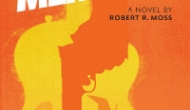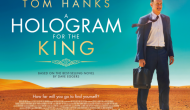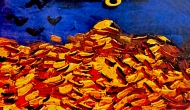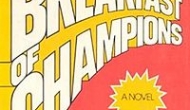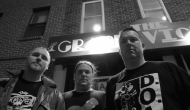Now that I live in New York, I imagine I will have more time for reading, since the Fall and Winter seasons promise to be dark and rainy and cold (thank goodness), as opposed to the perpetually sunny days of Los Angeles that naturally dissuade you from staying indoors with a good book. And since I almost never seem to read a book that’s less than twenty years old—for such books, like moldy cheeses and fermented meats, gain their considerable power with age, becoming gourmet delicacies—I’ll be entitling my new monthly column “Dusty Bookshelf,” a title which I more or less stole from Thad Weitz to mean a review of any old book. It’s much better than “Yellowed Pages,” since that moniker makes it sound as if the pages are drenched in urine, although to be fair sometimes they are.
Certainly J. G. Ballard’s 1972 novel, Crash, is obsessed with the fluids that we are filled with, and fill each other with, the same way we add coolant, washer fluid and gasoline to our cars. In fact, there are more bodily fluids in Crash than previously thought possible this side of the Marquis De Sade. There’s explosions of semen, so so very much semen, along with spit and the aforementioned urine, as well as vaginal mucus, shit and blood all splattered on the pages in prodigious quantities.
And there’s wounds. Descriptions of wounds abound as vehicles crash into one another in countless ways, both in reality and in the fantasies of the main character, here played by an alternate version of Ballard himself, as well as the menacing psycho-sexual-vehicular-messiah-of-death, Vaughn, who leads a group of car accident victim-enthusiasts to their final destinies.
Vaughan unfolded for me all his obsessions with the mysterious eroticism of wounds: the perverse logic of blood-soaked instrument panels, seat-belts smeared with excrement, sun-visors lined with brain tissue. For Vaughan each crashed car set off a tremor of excitement in the complex geometries of a dented fender, in the unexpected variations of crushed radiator grilles, in the gruesome overhand of an instrument panel forced on to a driver’s crotch as if in some calibrated act of machine fellatio. The intimate time and space of a single being had been fossilized for ever in this web of chromium knives and frosted glass.
And that’s just on page 12.
Crash is methodically constructed, with every word seemingly thought over and weighed out, producing a kind of rhythmic precision like the pistons of a Lincoln Continental roaring down the highway, a steel box of speeding death. There is a metronomic repetition to certain words and phrases: chromium, natal cleft, semen, frosted glass, an assembly line of verbal machinery that makes the book go. And it’s fascinating, thrilling, horrifying and hilarious all at the same time, not only for it’s meticulous descriptions of the unthinkable, but for it’s keen prediction of a future that has now come true—our fetishized death culture where everything is captured on video, where dash cams, and Go-Pros have us sitting behind the wheel, passengers in our own POV annihilation. Crash is a “sex novel” although one far removed from any of sex’s life producing power. No, this is a sex novel where the copulation is oncoming death itself, impaling you on the dashboard as you cum all over the leather sets for an infinitesimal moment, jettisoned through the windshield, your face ripped off in an explosion of jagged glass.
Ultimately the specifics of the plot are somewhat unimportant in comparison to the totality of the book’s ideas which concern the marriage of violence and desire, the need for self-destruction and re-birth, the role of fantasy in our daily lives, and the increasingly desperate search for thrills in the modern world where technology has dulled our emotions.
Trying to exhaust himself, Vaughan devised an endless almanac of terrifying wounds and insane collisions: The lungs of elderly men punctured by door-handles; the chests of young women impaled on steering-columns; the cheek of handsome youths torn on the chromium latches of quarter-lights. To Vaughan, these wounds formed the key to a new sexuality, born from a perverse technology. The images of these wounds hung in the gallery of his mind, like exhibits in the museum of a slaughterhouse.
Ballard wrote some 37 books during his career before dying from pancreatic cancer at the age of 78. All in all, he is probably best known as the author of Empire of the Sun, which is a fairly straight ahead story of a boy in World War II that was made into a solid film by Steven Spielberg back in 1984 and that starred a young Christian Bale before his rise to Batman/Oscar/Box Office juggernaut. Crash was made into a film in 1996 by Canadian auteur David Cronenberg that widely divided audiences. Staring James Spader as Ballard, and Kara Unger as his wife, Cronerberg’s take on the film is faithful to the book yet, like the movie version of the Road, written by Cormac McCarthy, it ultimately fails to translate the visceral power of the book’s prose to the screen.
Boldly original, Crash has become a cult classic that deserves to be read, a darkly lit nightmare where the truth is viewed through the cracked windshield of the eternal Id. 5 out of 5 stars.
**You should follow Shea Magazine on Twitter HERE!*
Tony Shea ( Editor-in-Chief, New York)
Tony Shea is based in New York, having recently moved from Los Angeles after more than a decade on the sunny coast. His short films have won numerous awards and screened at major festivals around the world including Comic-Con. As a musician, he is the lead singer for Los Angeles rock n’ roll band Candygram For Mongo (C4M) candygramformongo.com who has been a featured artist on Clear Channel Radio’s Discover New Music Program and whose songs have been heard on Battlestar Gallactica (Syfy Channel) and Unhitched (Fox) among other shows and films.
- Web |
- More Posts (236)

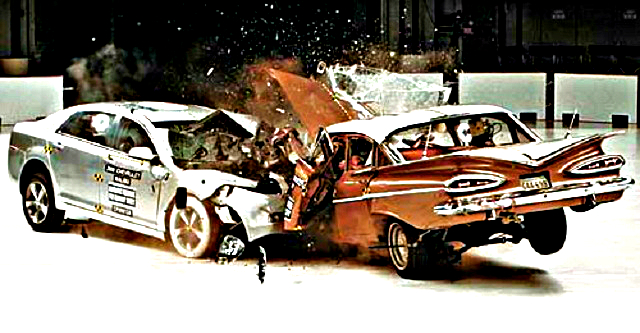






![Let's Go to the Empire State Building - Shall We? [PHOTOS]](https://sheamagazine.com/wp-content/plugins/special-recent-posts-pro/cache/MjAwMTAwbm9JTUdfMzkxNjE=.jpg)
![Scenes from Washington Square Park - NYC [PHOTOS]](https://sheamagazine.com/wp-content/plugins/special-recent-posts-pro/cache/MjAwMTAwbm9JTUdfNDA1Mg==.jpg)
![Sunset - Pelham Shore Park - Long Island Sound [PHOTOS]](https://sheamagazine.com/wp-content/plugins/special-recent-posts-pro/cache/MjAwMTAwbm9JTUdfMzM3MC1SRVNJWkU=.jpg)
![Let's Go to Chinatown, Shall We? [PHOTOS]](https://sheamagazine.com/wp-content/plugins/special-recent-posts-pro/cache/MjAwMTAwbm9jaGluYXRvd24tMi1idy0=.jpg)



